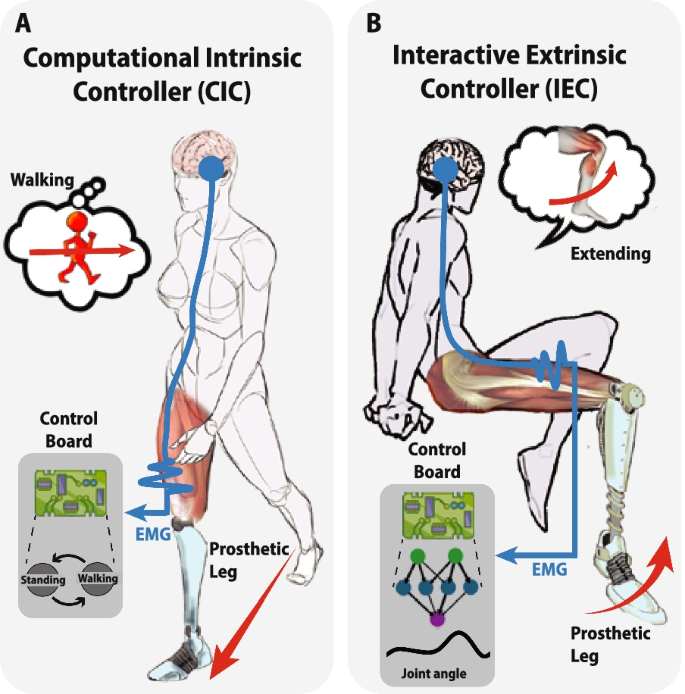The line between human intent and machine action is becoming increasingly blurred, moving from the realm of science fiction into tangible reality. At the forefront of this revolution is the field of neural interface technology, where advancements in artificial intelligence, bio-sensing, and robotics are converging to create systems that can interpret the body’s own electrical signals with unprecedented fidelity. This breakthrough is not merely about incremental improvements; it represents a paradigm shift in how we interact with technology. For individuals with limb differences, it promises a future of prosthetic control that is as intuitive and fluid as a natural limb. Beyond accessibility, this technology is poised to redefine human-computer interaction across a vast spectrum of applications, from controlling complex machinery to navigating virtual worlds. This article delves into the latest developments in neural interfaces, exploring the underlying technology, its profound implications, and the challenges that lie ahead on this exciting frontier.
The New Era of Neural Interface Technology
For decades, prosthetic control has largely relied on myoelectric technology, which uses surface sensors to detect the electrical activity of remaining muscles. While functional, this approach often feels clunky and requires significant cognitive effort from the user to map specific muscle flexes to pre-programmed prosthetic movements. The latest wave of Neural Interfaces News signals a move towards a far more sophisticated and intuitive approach: directly tapping into the rich data streams of the peripheral nervous system. The central goal is to capture the user’s intent—the desire to move a finger, rotate a wrist, or grasp an object—before it becomes a gross muscle contraction, and translate that intent into seamless, real-time action.
This leap forward is enabled by two key innovations. First is the development of advanced, implantable biosensors. Unlike surface electrodes, these tiny sensors can be placed in or near muscle tissue to capture high-resolution electromyography (EMG) signals with a much higher signal-to-noise ratio. This provides a clearer, more detailed window into the user’s intended movements. This evolution in hardware is a significant topic in AI Sensors & IoT News, as these biosensors are essentially hyper-specialized IoT devices for the human body. The second, and perhaps most critical, component is the application of artificial intelligence. Raw neural data is incredibly complex and noisy. AI and machine learning algorithms are the engines that decode this complexity. They learn each user’s unique neural patterns, filtering out noise and translating faint electrical whispers into precise, actionable commands for a robotic limb or other external device. This local processing of data is a key trend in AI Edge Devices News, where computation happens at the source to minimize latency—a critical factor when controlling a limb in real-time.
From Signal to Action: The Core Principle
The fundamental principle is to create a stable, long-term connection between the human nervous system and an external device. By capturing high-fidelity signals directly from the source, these systems can discern subtle nuances of intended movement that are impossible to detect with surface sensors. For example, instead of just registering a “close hand” signal, the system can differentiate between the intent to form a power grip, a pinch grip, or to move an individual finger. This granular level of control is what separates next-generation prosthetics from their predecessors, making them feel less like a tool and more like a true extension of the user’s body. This progress is a cornerstone of the latest Health & BioAI Gadgets News, highlighting a future where technology seamlessly integrates with human biology to restore and enhance function.
Decoding the Brain’s Intent: A Technical Deep Dive
Achieving this level of intuitive control requires a sophisticated technology stack that bridges biology and silicon. This process can be broken down into three critical stages: signal acquisition, AI-powered interpretation, and actuation within a closed-loop system. Each stage presents its own set of technical challenges and opportunities for innovation.
Signal Acquisition: Beyond the Surface
The quality of the input signal is paramount. While traditional surface EMG (sEMG) is non-invasive, it suffers from signal attenuation as electrical impulses pass through skin and fat, leading to “crosstalk” between different muscle signals. Modern neural interfaces employ more direct methods:

- Implanted Myoelectric Sensors (IMES): These are small, biocompatible sensors implanted directly into the muscle tissue. By being closer to the signal source, they capture much cleaner, higher-amplitude signals, allowing for the differentiation of individual muscle fiber activations.
- Targeted Muscle Reinnervation (TMR): This surgical procedure re-routes residual nerves that once controlled the amputated limb to remaining muscles in the chest or upper arm. When the user thinks about moving their phantom hand, these reinnervated muscles contract, generating a strong, clear EMG signal that can be picked up by surface or implanted sensors.
- Peripheral Nerve Interfaces (PNIs): The most advanced approach involves placing electrodes directly on or around peripheral nerves. This allows for the capture of both motor (efferent) signals traveling from the brain to the limb and sensory (afferent) signals traveling back to the brain, opening the door for true sensory feedback.
The data from these sensors is what fuels the system. The ongoing AI Research / Prototypes News is filled with studies comparing the resolution and long-term stability of these different approaches, each offering a unique trade-off between invasiveness and signal fidelity.
The AI-Powered Interpreter
Once a clean signal is acquired, the “brain” of the system takes over. This is where machine learning models, particularly deep neural networks, play a transformative role. The process involves:
- Training Phase: The user is prompted to think about performing various movements (e.g., “open hand,” “make a fist,” “point index finger”). The system records the corresponding neural data patterns. This data is used to train a machine learning model to associate specific patterns with specific intents.
- Real-Time Inference: After training, the model runs continuously, analyzing the incoming stream of neural data in real-time. When it recognizes a learned pattern, it outputs the corresponding command to the prosthetic device.
- Adaptive Learning: The best systems continue to learn and adapt over time. The AI can adjust to changes in the user’s physiology, electrode position, or even fatigue, ensuring that control remains robust and reliable. This adaptive capability is a key theme in AI Assistants News, where systems learn user preferences to become more effective.
This AI-driven decoding is a monumental leap beyond simple threshold-based triggers, enabling a rich and multi-dimensional control scheme that mirrors the complexity of a biological limb.
Beyond Prosthetics: The Expanding Universe of Neural Control
While advanced prosthetics are the most visible application, the underlying technology has far-reaching implications across numerous sectors. The ability to translate neural intent into digital commands is a foundational building block for the next generation of human-machine interaction, impacting everything from industrial robotics to consumer entertainment.
Revolutionizing Robotics and Smart Environments
In industrial settings, a skilled operator could use a neural interface to control a complex robotic arm with natural, intuitive thought, performing delicate assembly or repair tasks in hazardous environments. This is a major topic in Robotics News and could enhance both safety and productivity. In the home, the same technology could empower individuals with severe mobility impairments to interact with their environment. Imagine controlling smart home devices—adjusting lights, thermostats, or entertainment systems—with a simple thought. This intersects heavily with Smart Home AI News and AI for Accessibility Devices News, promising greater independence for millions. Even areas like agriculture could be impacted, with interfaces allowing for precise control of AI Gardening / Farming Gadgets News and automated machinery.
The Future of Immersive Experiences and Creativity
The AR/VR AI Gadgets News landscape is set to be transformed by neural interfaces. Instead of relying on clumsy handheld controllers, users could navigate virtual worlds and manipulate digital objects with the speed of thought. This would create a level of immersion and presence that is currently unattainable. In the gaming world, this could lead to revolutionary new gameplay mechanics, a hot topic for AI in Gaming Gadgets News. Furthermore, AI Tools for Creators News could see artists, designers, and musicians using these interfaces to control digital software, sculpting 3D models or composing music in a more fluid and expressive manner. The technology could even extend to controlling sophisticated AI Toys & Entertainment Gadgets News or piloting advanced drones, as covered in Drones & AI News.

A Platform for Human Augmentation
Beyond restoring function, neural interfaces open up the conversation about human augmentation. The ability to seamlessly control external devices, from an exoskeleton that enhances strength (AI Fitness Devices News) to a third robotic arm for complex tasks, pushes the boundaries of human capability. This also extends to mobile technology, where future iterations of AI Phone & Mobile Devices News might include neural-based inputs that supplement or replace touchscreens. As these systems become more integrated, they will require robust security, a growing concern in AI Security Gadgets News, to protect highly personal biological data from unauthorized access or manipulation.
Navigating the Challenges: Hurdles and Best Practices
Despite the immense promise, the path to widespread adoption of advanced neural interfaces is fraught with challenges. A balanced perspective is crucial for navigating the technical, ethical, and practical hurdles that lie ahead.
The Promise of Unprecedented Control
The primary advantage is undeniably the potential for lifelike, intuitive control. For users, this means a lower cognitive burden, the ability to perform complex, multi-joint movements, and a greater sense of embodiment and ownership over their prosthetic device. The potential for bidirectional interfaces—which not only send commands out but also receive sensory information back (e.g., pressure, texture, temperature)—could close the feedback loop, allowing a user to “feel” what their prosthetic hand is touching. This is the holy grail of prosthetic design and a major focus of current AI Research / Prototypes News.

Technical and Ethical Hurdles
On the other side of the coin are significant challenges:
- Invasiveness and Biocompatibility: The most effective systems currently require surgery. This carries inherent risks, and the long-term stability and biocompatibility of implanted electronics are still areas of active research. The body’s foreign body response can lead to scar tissue formation, which can degrade signal quality over time.
- Cost and Accessibility: These cutting-edge systems are incredibly expensive, involving surgery, custom hardware, and extensive rehabilitation. Ensuring equitable access will be a major societal challenge.
- Data Security and Privacy: Neural data is perhaps the most personal data imaginable. Protecting this data from being hacked or misused is a critical ethical and technical imperative. The implications of a compromised neural interface are far more severe than a compromised social media account.
- Robustness and Reliability: The system must work flawlessly in a wide variety of real-world conditions. Signal quality can be affected by sweat, movement, and electromagnetic interference, and the AI models must be robust enough to handle these perturbations without failing.
Tips and Considerations for Development
For researchers and companies in this space, progress requires a multi-faceted approach. Prioritizing minimally invasive or even high-density non-invasive techniques could lower the barrier to entry. User-centric design is non-negotiable; devices must be comfortable, durable, and easy to maintain. Furthermore, establishing transparent ethical guidelines and robust security protocols from the outset will be essential for building public trust. Collaboration between neuroscientists, AI experts, roboticists, surgeons, and, most importantly, the end-users is the only way to ensure this technology develops responsibly.
Conclusion: Charting the Course for Human-Machine Symbiosis
We are witnessing the dawn of a new era in human-machine integration. The convergence of AI and advanced biosensing is finally unlocking the potential of neural interfaces to deliver on their long-held promise: restoring function and creating a seamless, intuitive link between mind and machine. While the initial focus is rightly on revolutionary applications in prosthetics and accessibility, the foundational technology will ripple outwards, reshaping countless industries and our very definition of interaction. The journey ahead is complex, demanding rigorous scientific research, thoughtful engineering, and a deep commitment to ethical development. However, the potential to empower individuals, enhance human capability, and forge a more symbiotic relationship with our technology makes it a frontier worth exploring with both ambition and wisdom.










